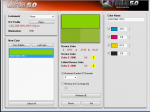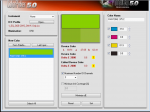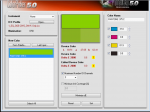Dario
Well-known member
Hello there,
I need to strip some spot color from a multi inks job, so I'd like to find the ones with the smaller DeltaE compared to its cmyk equivalent.
is there a quick way to check the deltaE between a spot color and its nearest cmyk (e.g. Fogra39) equivalent?
Given a spot color, I'd like to find a way to find its 'less worst' cmyk quasi-equivalent.
Am I dreaming?
Regards
I need to strip some spot color from a multi inks job, so I'd like to find the ones with the smaller DeltaE compared to its cmyk equivalent.
is there a quick way to check the deltaE between a spot color and its nearest cmyk (e.g. Fogra39) equivalent?
Given a spot color, I'd like to find a way to find its 'less worst' cmyk quasi-equivalent.
Am I dreaming?
Regards
Last edited:
















